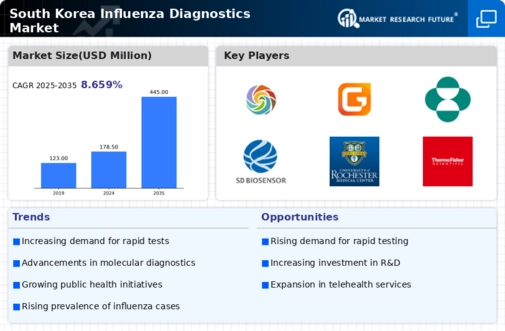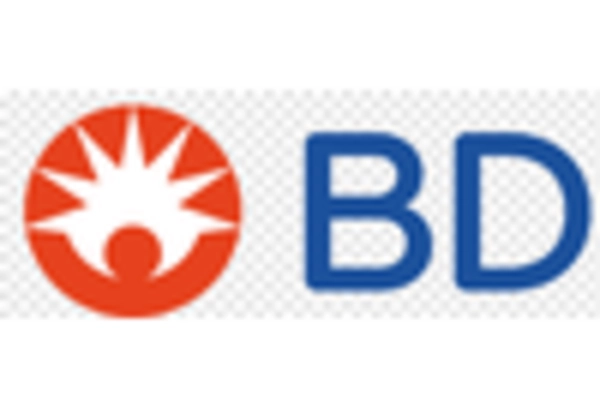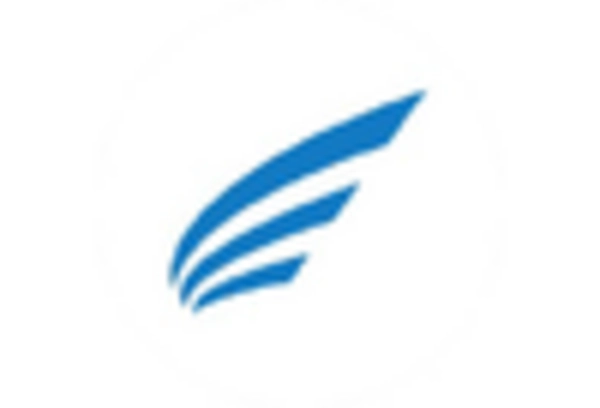Government Funding and Support
Government funding and support play a crucial role in the growth of the influenza diagnostics market. In South Korea, the government has allocated substantial resources to enhance public health infrastructure, particularly in response to infectious diseases. Recent initiatives have included financial support for research and development of diagnostic technologies, which has led to innovations in rapid testing methods. The Ministry of Health and Welfare has reported an increase in budget allocations for influenza surveillance and diagnostics, with funding rising by 20% over the past two years. This financial backing encourages the development of new diagnostic tools and technologies, thereby expanding the market. As a result, the influenza diagnostics market is likely to experience significant growth driven by enhanced government initiatives aimed at improving public health outcomes.
Rising Incidence of Influenza Cases
The increasing incidence of influenza cases in South Korea is a primary driver for the influenza diagnostics market. Seasonal outbreaks and sporadic epidemics contribute to heightened awareness among healthcare providers and the public. According to the Korea Centers for Disease Control and Prevention, influenza activity has shown a notable rise, with hospitalization rates increasing by approximately 15% in recent years. This trend necessitates the implementation of effective diagnostic tools to ensure timely identification and management of influenza infections. Consequently, healthcare facilities are investing in advanced diagnostic technologies, which is likely to bolster the influenza diagnostics market. The demand for rapid and accurate testing solutions is expected to grow, as early diagnosis is crucial for effective treatment and containment of the virus.
Growing Awareness of Preventive Healthcare
There is a growing awareness of preventive healthcare among the South Korean population, which significantly impacts the influenza diagnostics market. As individuals become more health-conscious, there is an increasing demand for diagnostic tests that can identify influenza early. Public health campaigns and educational programs have emphasized the importance of early detection and vaccination, leading to a rise in testing rates. Recent surveys indicate that approximately 60% of the population is now more proactive about seeking diagnostic tests for influenza. This shift in consumer behavior is likely to drive the demand for innovative diagnostic solutions, as individuals seek to mitigate the risks associated with influenza infections. Consequently, the influenza diagnostics market is poised for growth as healthcare providers respond to this heightened demand for preventive measures.
Technological Innovations in Diagnostic Tools
Technological innovations in diagnostic tools are transforming the landscape of the influenza diagnostics market. Advances in molecular diagnostics, such as polymerase chain reaction (PCR) and next-generation sequencing, have significantly improved the accuracy and speed of influenza testing. In South Korea, the adoption of these technologies has increased, with a reported growth of 25% in the use of molecular tests over the past year. These innovations not only enhance the reliability of test results but also facilitate the rapid identification of influenza strains, which is essential for effective treatment and public health response. As healthcare providers increasingly adopt these advanced diagnostic tools, the influenza diagnostics market is likely to expand, driven by the demand for more efficient and precise testing methods.
Impact of Seasonal Variability on Testing Demand
Seasonal variability has a profound impact on the demand for influenza diagnostics in South Korea. The influenza season typically peaks during the winter months, leading to a surge in testing as healthcare providers aim to manage outbreaks effectively. Data from the Korea Centers for Disease Control and Prevention indicates that testing rates can increase by up to 30% during peak influenza seasons. This seasonal fluctuation creates a dynamic market environment, where diagnostic manufacturers must be prepared to meet the heightened demand during these critical periods. As healthcare systems adapt to these seasonal patterns, the influenza diagnostics market is likely to experience fluctuations in demand, necessitating strategic planning and resource allocation to ensure adequate testing capabilities throughout the year.

















Leave a Comment